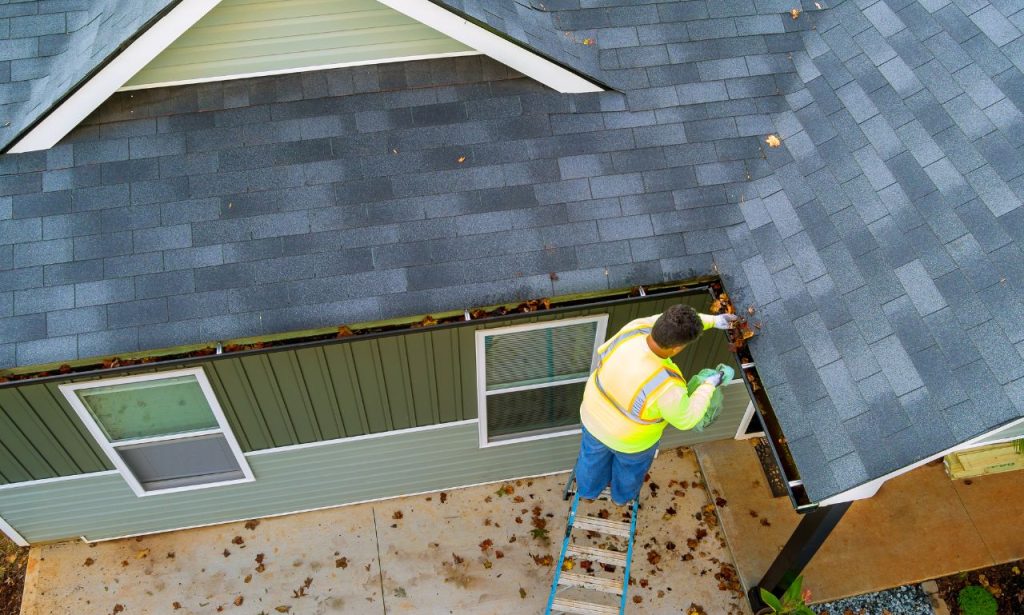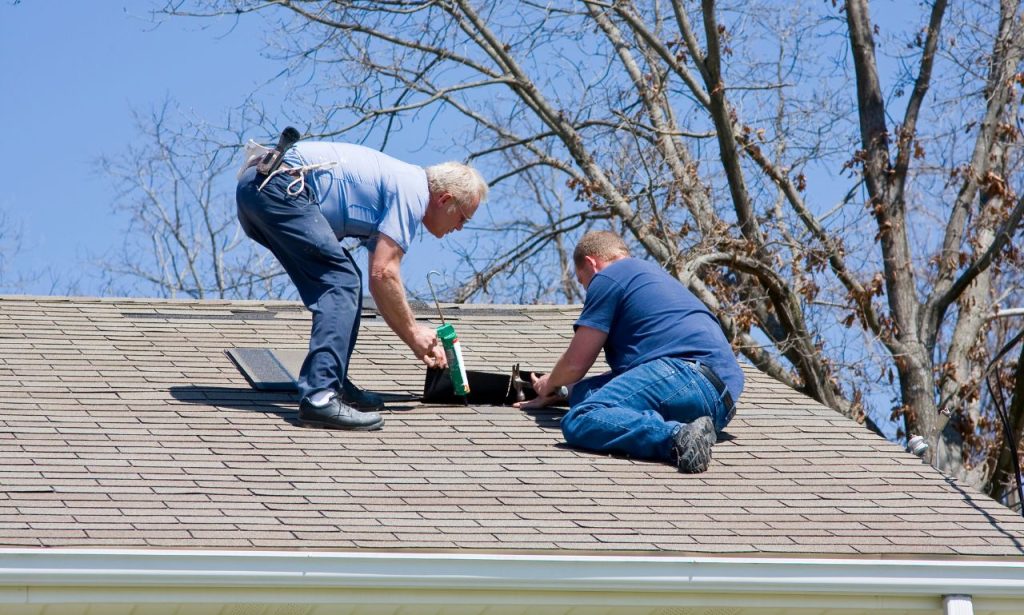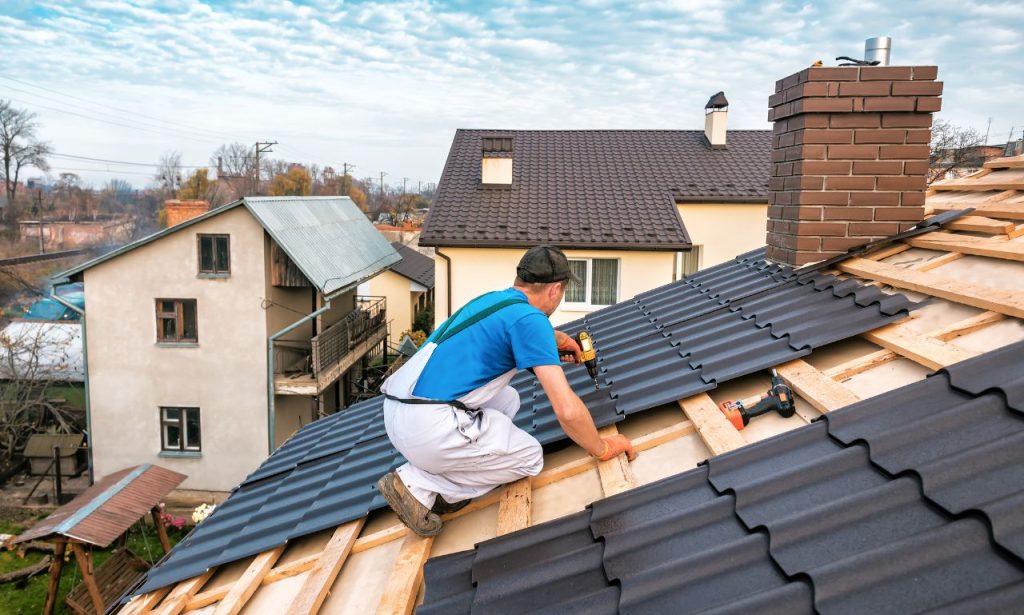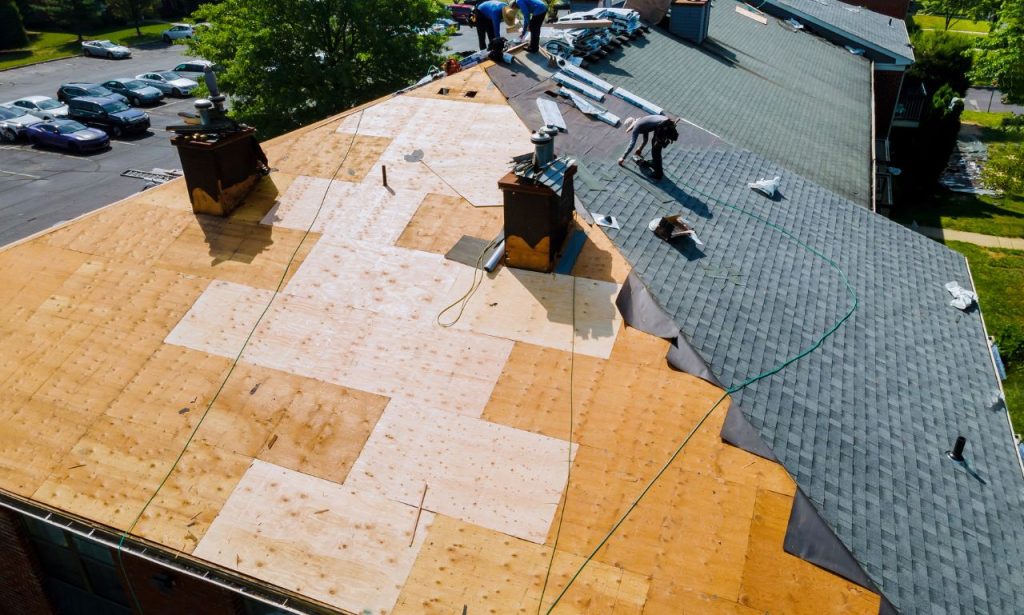Maintaining your roof is crucial for protecting your home and ensuring its longevity. Roof repair specialists recommend following these tips to preserve and restore your roof effectively.
Conduct Regular Inspections and Maintenance
Identifying Issues Early
Regularly inspecting your roof allows you to catch potential problems before they escalate. Look for signs of damage, such as missing or cracked shingles, loose flashing, and sagging areas. Addressing these issues promptly can save you from costly repairs down the line.
Scheduling Professional Assessments
While self-inspections are valuable, it’s wise to have roof repair specialists assess your roof annually. They have the expertise to identify hidden issues and provide tailored recommendations for maintenance and repairs.
Effective Cleaning Practices and Debris Removal
Removing Debris

Leaves, twigs, and other debris can accumulate on your roof, trapping moisture and promoting the growth of moss and algae. Regularly clean your roof using a soft-bristled brush or a leaf blower to remove debris and prevent damage.
Cleaning Gutters and Downspouts
Clogged gutters and downspouts can cause water to overflow and seep under your shingles, leading to leaks and rot. Clean your gutters at least twice a year, especially after heavy rainfall or storms, to ensure proper water drainage.
Address Minor Repairs Promptly
Fixing Small Issues
Don’t ignore minor roof issues, such as a few missing shingles or a small leak. These problems can quickly escalate into major headaches if left unaddressed. Tackle small repairs as soon as you notice them to prevent further damage and extend your roof’s lifespan.
Sealing and Caulking
Regularly inspect and seal any cracks or gaps around chimneys, vents, and flashing. Use a high-quality, weather-resistant sealant to prevent water infiltration and maintain a watertight seal.
Importance of Preventative Treatments
Applying Protective Coatings
Consider applying a protective coating to your roof to shield it from the elements. Roof coatings can reflect UV rays, reduce heat absorption, and provide an extra layer of waterproofing. Consult with a roof repair specialist to determine the best coating for your specific roofing material.
Treating for Moss and Algae
Moss and algae growth can not only make your roof look unsightly but also cause damage over time. Apply a moss and algae treatment to your roof to prevent their growth and protect your shingles from deterioration.
Ensure Proper Roof Ventilation
Attic Ventilation
Proper attic ventilation is crucial for regulating temperature and moisture levels in your home. Inadequate ventilation can lead to heat buildup, which can cause your shingles to deteriorate prematurely. Install sufficient intake and exhaust vents to promote air circulation and prevent moisture-related issues.
Soffit and Ridge Vents
Soffit and ridge vents work together to create a natural airflow in your attic. Cool air enters through the soffit vents, while warm, moist air escapes through the ridge vents. This continuous airflow helps prevent heat and moisture buildup, extending your roof’s life.
Choose High-Quality Materials for Restoration
Investing in Durable Shingles
When it’s time to replace your roof, invest in high-quality, durable shingles. Look for shingles with a high wind resistance rating, impact resistance, and a long warranty. Premium shingles may cost more upfront but can save you money in the long run by lasting longer and requiring fewer repairs.
Selecting the Right Underlayment
The underlayment is a critical component of your roofing system, providing an extra layer of protection against water infiltration. Choose a high-quality, tear-resistant underlayment that is compatible with your shingles and climate.
Hire Roof Repair Specialists for Major Work
Expertise and Experience
When it comes to major roof repairs or replacement, it’s best to leave the work to the professionals. Roof repair specialists have the expertise, experience, and tools to handle complex roofing projects safely and efficiently. Attempting DIY repairs can be dangerous and may void your roofing warranty.
Proper Installation Techniques
Professional roofing contractors follow proper installation techniques to ensure your roof is installed correctly and performs optimally. They know how to properly secure shingles, install flashing, and ventilate your roof to prevent issues like leaks, ice dams, and premature aging.
Consider Environmental Factors in Roof Care

Climate-Specific Maintenance
Different climates present unique challenges for roofs. In areas with heavy snowfall, it’s important to prevent ice dams by ensuring proper insulation and ventilation. In hot, sunny regions, using reflective coatings can help reduce heat absorption and extend your roof’s life. Tailor your roof maintenance plan to your specific climate.
Choosing Eco-Friendly Materials
When selecting roofing materials, consider their environmental impact. Look for shingles made from recycled materials or those that are recyclable at the end of their lifespan. Some roofing materials, like metal or clay tiles, are naturally energy-efficient and can help reduce your home’s cooling costs.
Protect Local Wildlife During Maintenance
Avoiding Nesting Season
If you have trees near your home, be mindful of nesting birds when scheduling roof maintenance. Avoid disturbing nests or removing branches during nesting season, as this can harm the birds and their offspring. If possible, schedule tree trimming and roof work outside of nesting season.
Installing Bird Deterrents
While birds can be charming, their droppings can cause damage to your roof and gutters. Consider installing bird deterrents, such as spikes or wire coils, to discourage birds from perching on your roof. Be sure to choose humane options that don’t harm the birds.
Monitor Weather Conditions and Their Impact
Preparing for Storms
Before a storm hits, take proactive measures to protect your roof. Secure loose shingles, trim overhanging branches, and clear your gutters to prevent damage. If you suspect your roof has been damaged during a storm, have it inspected by a professional as soon as possible.
Addressing Hail Damage
Hail can cause significant damage to your roof, leaving dents, cracks, and even holes in your shingles. After a hailstorm, check your roof for signs of damage and contact a roof repair specialist if necessary. Some insurance policies cover hail damage, so be sure to document the damage and file a claim if applicable.
Schedule Seasonal Roof Check-Ups
Spring Inspection
After the harsh winter months, schedule a spring roof inspection to assess any damage caused by snow, ice, and freezing temperatures. Look for signs of wear and tear, such as cracked or missing shingles, and address any issues promptly.
Fall Maintenance
Prepare your roof for the upcoming winter by scheduling a fall maintenance check-up. Clear your roof and gutters of fallen leaves and debris, and ensure your attic insulation and ventilation are in good condition to prevent ice dams and moisture buildup.
Utilize Roof Coatings for Longevity
Benefits of Roof Coatings
Roof coatings are an excellent way to extend the life of your roof and improve its performance. They can seal minor cracks and leaks, reflect heat, and provide an extra layer of waterproofing. Some coatings even have cool roof properties, which can help reduce your energy bills.
Choosing the Right Coating
There are various types of roof coatings available, each with its own benefits and drawbacks. Acrylic coatings are affordable and easy to apply, while silicone coatings offer excellent UV and moisture resistance. Consult with a roof repair specialist to determine the best coating for your specific roofing material and climate.
Install Gutter Guards for Effective Water Management

Preventing Clogs
Gutter guards are a simple and effective way to prevent leaves, twigs, and other debris from clogging your gutters. They allow water to flow freely while keeping debris out, reducing the need for frequent gutter cleaning.
Choosing the Right Gutter Guard
There are several types of gutter guards available, including mesh screens, reverse curve designs, and foam inserts. Consider factors such as your local climate, the type of debris common in your area, and your budget when selecting a gutter guard system.
Evaluate and Upgrade Insulation
Importance of Insulation
Proper attic insulation is crucial for regulating your home’s temperature and preventing moisture buildup. Inadequate insulation can lead to ice dams in the winter and heat buildup in the summer, both of which can damage your roof.
Upgrading Insulation
If your attic insulation is old, compacted, or insufficient, consider upgrading to a higher R-value insulation. This will not only help protect your roof but also improve your home’s energy efficiency and comfort level.
Understand Local Building Codes and Regulations
Obtaining Necessary Permits
Before undertaking any major roof repairs or replacement, familiarize yourself with local building codes and regulations. Some projects may require permits, and failing to obtain them can result in fines or legal issues.
Adhering to Code Requirements
Ensure that any roofing work, whether performed by yourself or a professional, adheres to local building codes. This includes using approved materials, following proper installation techniques, and meeting minimum insulation and ventilation requirements.
Utilize Energy-Efficient Roofing Options

Cool Roofs
Cool roofs are designed to reflect more sunlight and absorb less heat than traditional roofs. They can help reduce your home’s cooling costs and extend the life of your roof by minimizing heat-related damage.
Energy Star Rated Products
When selecting roofing materials, look for products with an Energy Star rating. These products have been independently certified to meet strict energy efficiency guidelines, helping you save money on energy bills and reduce your environmental impact.
Don’t wait until it’s too late – contact a trusted roof repair specialist today to schedule an inspection and ensure your roof is in top condition.
ALSO READ: How Much Does a New Roof Cost in Ohio?
FAQs
It’s recommended to inspect your roof at least twice a year, typically in the spring and fall. However, if you live in an area with severe weather conditions, you may need to inspect your roof more frequently.
Some common signs that your roof needs repair include missing or cracked shingles, leaks, sagging areas, and excessive granule loss. If you notice any of these issues, contact a roof repair specialist as soon as possible.
Regular maintenance is key to extending your roof’s lifespan. This includes cleaning your roof and gutters, addressing minor repairs promptly, ensuring proper ventilation, and applying protective treatments as needed.
The lifespan of a roof depends on various factors, including the roofing material, climate, and maintenance history. Generally, asphalt shingle roofs last 20-30 years, while metal roofs can last 50 years or more. If your roof is approaching the end of its expected lifespan or has extensive damage, it may be time to consider a replacement.





